During class on Monday we started talking about the different types of models associated with language acquisition and what they were about. For me it was kind of rushed and I didn't get a whole lot of information on the other models. Mrs. White said she was going to review it all again next Monday, but I was thinking that we could talk about it on here first, as a way to see what we do know about all of them, and what we still want to know or need to find out.
My group had Skinner's behavioral model. This model puts a lot of emphasis on the role of the environment in a child's language acquisition. It is thought that language is learned from parents, siblings and others that the child comes in contact with. Kids being with no language. Gradually they begin to imitate sounds made by people they are most frequently exposed to. My group thought the video that went best with this model was the first one about the twin boys. In the video one laughs and then the other one laughs too. They basically imitated what the other was doing.
Feel free to add to mine, or start a reply about the model that your group learned about.
Also, good luck with everything going on this week. I don't know about you guys, but it has been hard for me to get back in the swing of things after our 6 day weekend!! Have a great rest of the week =]
2/4/09
Subscribe to:
Post Comments (Atom)
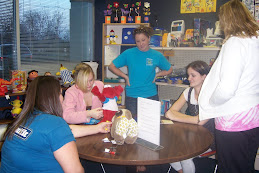
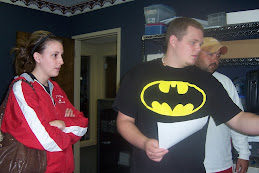
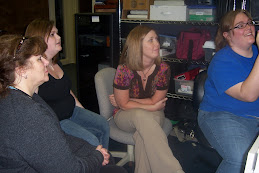
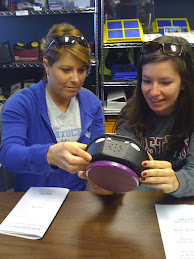
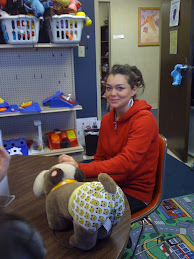
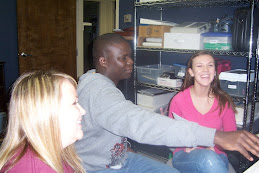
Excellent idea. He who does the most work - learns the most. If I am doing all of the talking about the models - - guess who will learn the most - NOT YOU.
ReplyDeleteMonday's class was designed for STUDENTS TO GET INTO THE MATERIAL - not for the teacher to talk at students about the material. :) In order to TALK about something, I agree with which model . . . that you have to have some experiences. . . cognition. Once you have those THEN you will have something to meaningfully talk about. Now you'll be ready to have a discussion with ME...
This class on language and communication will constantly have you as students be communicating - not ME TALKING AT YOU.
I'm almost tempted to give DOUBLE POINTS or BONUS points for posts and comments on the models of language acquistion.
Let's see how many takers I get!
In addition to my earlier post, I would also like to add a few things that I found in the book and on blackboard.
ReplyDeleteThe behavioral model also mentions the fact that children string together verbal behaviors or utterances to make meaning. The example the book give of this is how a child learns to eventually say "bye bye Da Da," by starting with "Da" and working up to "Da Da," and then finally to "bye bye Da Da."
The book also talks about how a parent can encourage and help their child to develop language by positively and negatively reinforcing the child's utterances.
Have a great weekend everyone!! =]
My group had the Psycholinguistic Model by Chomsky. In his model, children already have a natural instinct with language and already have an existing knowledge about it. In this model, the children then expand on this existing language and further learn through rules and developmental guidelines. He distinguishes this language to be different from other animials by saying that it is unique to humand and that it is universally accepted. This distinguishes language from sounds or noises made by other animals.
ReplyDeleteLike your group, we also felt that the twin baby boys could support our model. Yes I agree with you that they were imitating each other, but the idea of laughing at each other came naturally to them. They did not learn to laugh because something was funny, but were just laughing becasue it was natural to do. They would laugh when the one was licking the others finger, and would also laugh when they swung arms at each other. They were also making coo noises which came very natural to them.
Based on your model, I think that the baby sign language would be a good representation of the Behavioral Model. The flashcards had the signing motioins on them and the baby was imitating the motions. He was learning this new language that he did not have any basis to begin with. It was a complete knew idea and he was chaining together several behaviors. He was not only voicing the actions on the cards, but was also signing, combining two types of language.
ReplyDeleteFrom my understanding, the Pragmatic-Interactionist Model is when children start ot talk with a purpose. They have the means of communication in their mind and are talking for a specific purpose. They learn the reasons for communication through interactions and conversations with others. I felt that the video we watched with the girl talking on the phone would be represent this model. I think that she had learned from her parents that this was for the means of communication. She had not quite grasped the entire idea of the phone becasue she tried to show an action through the phone, but she had the intent of communicating in mind. I think that the little boy talking on the phone did not realize that it was to hold a conversation and he was just imitating somehting he saw a family memeber do, but the girl was past that idea and was trying to communicate. I hope this is right.
ReplyDeleteI guess with the final model, it is the next step after communicating and it is just improving your understanding of conversations and semantics, but this model kind of confuses me. if anyone could help me with the Semantic-Cognitive Model by Bloom, I don't really understand it. If anyone could explain this to me, that would be great.
Thanks
I'm still a little confused. Which model is it that requires personal experiences to back up language acquisition? I remember us talking about it, but I forgot to write it down and now can't find it.
ReplyDeleteCrystal-
ReplyDeleteThis would be Bloom's Semantic-Cognitive Model. It states that the child has to have an experience to discuss it. It used the "Mommy, sock" statement as an example. Whether the child meant for the mother to put the sock on the child or 'this is a sock' is not known. The mother would have to ask questions to understand what the child wanted.
Ok, Thanks. I just looked back in the book and read that part. This is the one I was asking about. Some kind of experience has to occur before the child sees a need to learn the language.
ReplyDelete